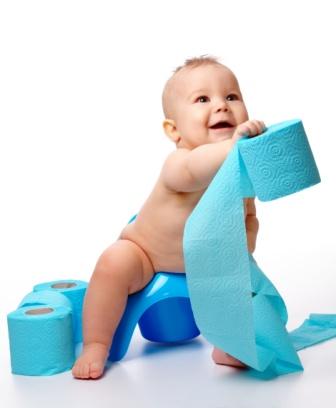How do you know if your toddler is ready to be potty trained?
Not all children will develop at the same rate and It is always best to follow the child’s natural developmental path. It is acceptable for children to begin using the potty or toilet between the ages of two and four years. It does not have to be done by the time a child is two or starts attending a play group.
Your toddler is interested in the toilet when
- They want to watch you when you use the toilet.
- They ask you questions about your toilet habits.
- Their nappy stays dry during the day
- They want to wear “big boy/girl undies.”
You can encourage interest by
- Asking them to come to the toilet with you when you need to go, so that they can watch.
- By allowing them to choose their big boy or girl undies, bathing suits.
Never force your toddler to use the toilet
It is imperative that you never force a child to use the toilet.
Be positive and encouraging but research indicates that too much pressure on the child during this time, especially from the mother can lead to psychological disorders such as obsessive compulsive disorder later in life.
Research also shows that children who use the toilet naturally at their own pace are less likely to wet their beds when they are older
Potty training tips
- You have to watch your toddler closely so you can take them to the potty or toilet when needed.
- Try not to nag them about going, but rather take them to the toilet at regular intervals to try. Always invite them to go with you if you need to go.
- It is essential that you congratulate them every time they are successful.
- If they have an accident, deal with it in a matter of fact way. Let them choose a clean pair of undies or bathing suit to change into, and tell them it’s okay as they are still learning.
- Be aware of your body language (especially sighing). You don’t want your child to feel ashamed when they are still trying to master using the toilet.
- Focus on teaching them to urinate in the toilet first, and offer them a nappy for bowel movements. Some children will be able to cope with using the toilet for urinating and bowel movements from the beginning. Others will need to master urinating first.
- Some boys may not want to sit on the toilet for bowel movements so give them time to watch dad and his toilet habits so that they can see it’s not only girls that sit on the toilet.
Consistency is key
The key to toilet training success is consistency. Once you begin you should not confuse your child by putting nappies on them for urinating.
Stay focused on your child so that you do not miss any opportunities.
By being positive, encouraging, and acknowledging their efforts your child will soon learn to control their muscles and use the toilet on their own.
About the Author: Claire Marketos www.inspiredparenting.co.za
Latest posts by Contributor (see all)
- How your baby’s brain develops during sleep - July 24, 2014
- Avoid these three mistakes when feeding your newborn at night - July 24, 2014
- Cleaning your toddler’s teeth can be fun and effective - July 24, 2014
-
No Comments" href="https://all4baby.co.za/toddlers-1-2-years/learning-development-1-2-years/1369/play-teaches-toddler/">

What play teaches your toddler
-
No Comments" href="https://all4baby.co.za/toddlers-1-2-years/parenting-a-toddler/1347/consistency-key-toddlers-bedtime-routine/">

Consistency is key to your toddler’s bedtime routine
-
No Comments" href="https://all4baby.co.za/toddlers-1-2-years/parenting-a-toddler/837/potty-train-toddler-using-guidelines/">

Potty train your toddler using these guidelines


 Saving...
Saving...